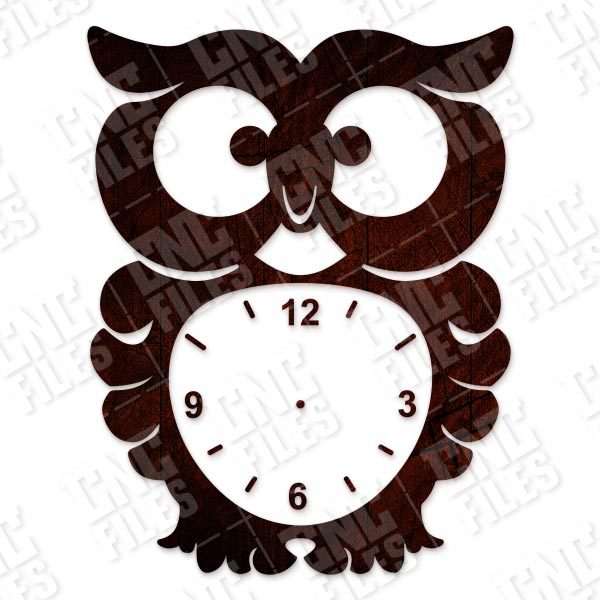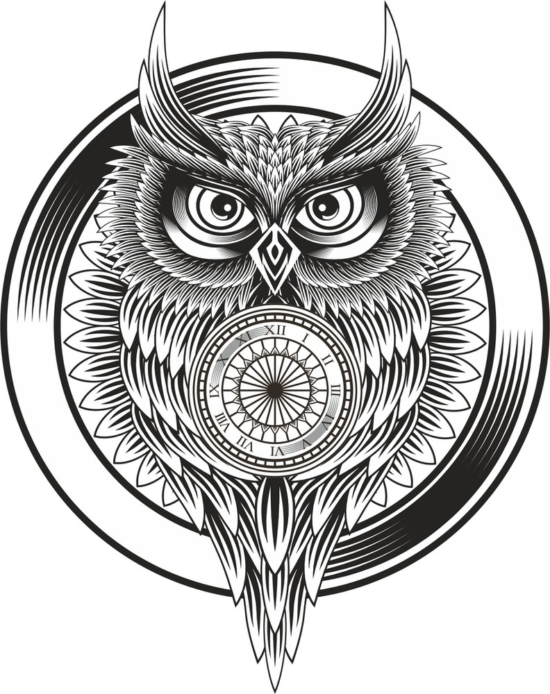
#Owl clock cnc full
After a full weekend of fighting with Eagle, I had something I could send off to OSH Park. I had to use some tricks with the Grid to get all the LEDs laid out in the exact right locations. I used Eagle CAD and finally had to spring for the non-free version so I could work with more than one page of circuit. So I measured an 10-layer alternating stack of acrylic and black card stock to get the exact spacing, and then I had enough info to begin laying out the PCB. The LEDs I was using are much fatter than that 1/16″ acrylic layers I was using, so each layer needed to have a sort of integrated light guide leg that would stick out and sit directly above the 3 tiny color chips inside the LED.

If the first set of boards were a complete blowout, I could still get a second order in, but I had to hurry. Now ordering printed circuit boards from OSH Park takes something like 10 days, so I really needed to get that in the pipe. Ordering things from China is very cheap, but it can take a few weeks for the stuff to show up, so I had to get that moving quickly. I ordered a reel of 500 from China, along with some surface mount capacitor and resistor assortments, photo resistors, and some DS3231 real-time clock modules with battery backup. I was building 6 clocks, so I’d need 240 LEDs. I decided to go with the ATMEGA328p, which is the same chip in an Arduino UNO. They could be any color and all 40 of them could be controlled using just one pin from my controller. I chose the popular Neopixel surface mount LED as my light source. Time to make a lot of quick choices and order stuff from China. I decided to go for it, but I knew I’d have to get first-time-success-lucky on a number of things, and I told my coworkers that I did not expect to succeed. I’d never worked with surface mount electronics, never bent wood to such small radii, never designed a PCB with a lot of exact physical layout constraints, and never used an in-circuit programmer. I’m usually pretty careful planning one of these projects, and never before had I taken on one that had so many BIG unknowns. I even went so far as to do some prototypes of an alternative project that was much simpler, but I could tell that the owls were the ones that wanted to be made. Halloween came and went and I needed to decide. Really, I should have just stopped then, but I couldn’t stop thinking about the nice owl shapes. That’s pretty much the worst-case scenario for a make-or-break prototype. I really couldn’t say for sure whether this was going to work. The back digits where hard to read, there was a lot of inter-digit light bleed. So I spent one of my Wednesday nights making a prototype stack. If it failed, I could pull the plug on the owl idea before they got out of the paper prototype stage. I figured if I just spent one evening laser-etching a digit stack and holding it over an LED, I could figure out if the displays were going to be an unreadable mess. I can’t really start a Christmas Project until after the Halloween Costume builds are done, but this project couldn’t really take shape until I’d at least tested the viability of the Plexitube. Would this be this year’s Christmas Project? I really liked the design, and I thought it would be perfect for an owl-shaped clock with Plexitube eyes. I used my Swiss army knife to cut my co-workers’ name tags into owl prototypes. To pass the time, I started to do some sketches of an owl made from only two pieces of wood. Then I went to work at a new company, and I had to spend an entire day listening to benefits summaries and corporate on-boarding.

Thanks a lot guys!Īt the time it was unclear if light bleed between the layers would make the digits hard to read, so I sat on the Plexitube idea for a long time waiting for a project that could use that kind of display. The project has even gotten some attention from Hackaday and won this Reddit unconventional clock competition.

I even made a short video of one of the clocks in action. I’ve put the software, circuit designs, and illustrator files up on github. I’m pleased with the way the project turned out. Long ago I’d realized that a stack of 10 laser-etched digits with an LED to light up each digit might have the same visual charm as a Nixie Tube, and the Plexitube was born. The basic idea is that you position an LED at the edge of a piece of acrylic that has a pattern laser-etched into its surface, and the LED lights up the pattern. Nixie tubes are wonderful with their glass tube bodies and brightly glowing numerals, but think how wonderful a solid-state low-power any color “Nixie Tube” would be!

For Christmas I designed and built six steam-punk owl clocks that have a novel faux Nixie Tube display.


 0 kommentar(er)
0 kommentar(er)
